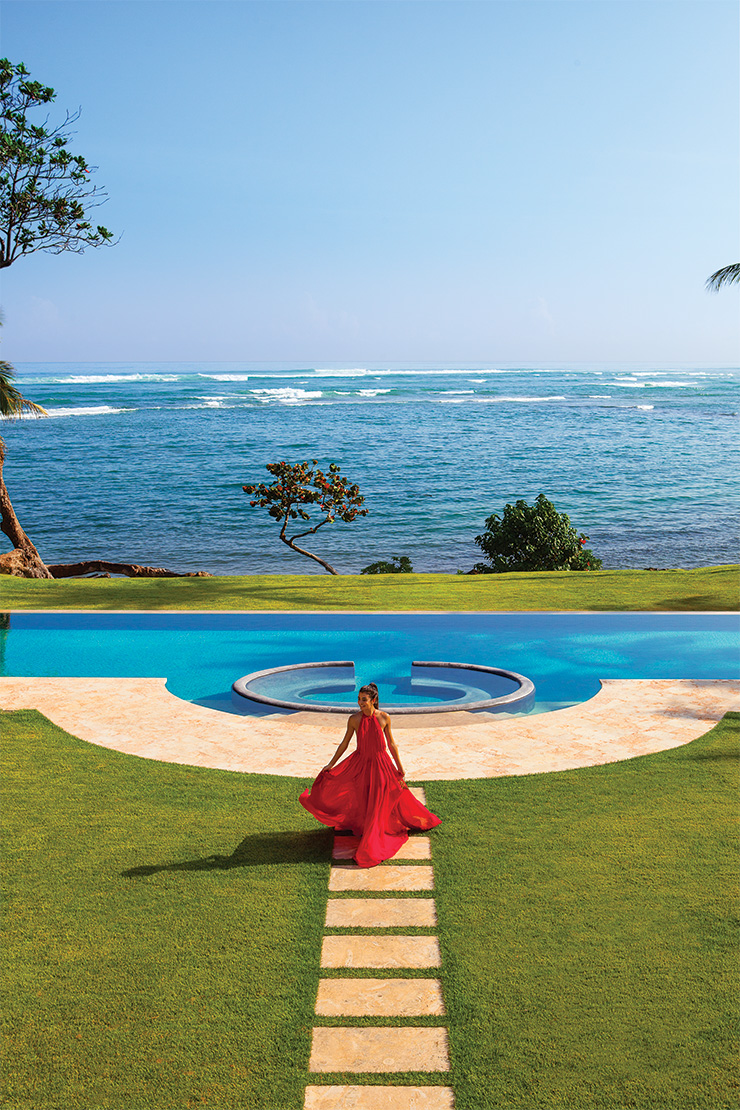By Mark Ellwood
Photography by Ken Kochey
It was 1958 when New York billionaire Laurance S. Rockefeller co-opted a pineapple and coconut plantation on a secluded bluff on Puerto Rico’s northern coast. He dubbed it Dorado Beach in honor of the more than 2 miles of golden sands that rim the reserve. It was his second eco-retreat and a spectacular achievement during that time.
The years following its heyday weren’t as kind to the expansive property after ownership changed hands. But now, more than 50 years after welcoming its first jet-setters, the storied property is poised to reclaim its place, thanks to a $350 million makeover, as one of the Caribbean’s most exclusive hideouts—and usher in a new era of lavish, discrete luxury for the Ritz-Carlton brand—since the opening of Dorado Beach, a Ritz-Carlton Reserve, in 2012.
It takes area vice president Mark Ferland just a few words to sum up the ethos of Reserve. “It’s an experience everyone can’t have,” he says. “It’s for that special anniversary or very special event in your lifetime.” Marriott International (Ritz-Carlton’s parent company), long known for its tight control of hotel development, has broken tradition by laying out few corporate requirements for its discrete new Ritz-Carlton Reserve brand.

A LOOK BACK: Dorado Beach’s golden shoreline is what prompted Laurance Rockefeller to give it that moniker in 1958; Opposite, the entrance to Su Casa welcomes guests with a view of the ocean.
Such a freewheeling approach makes those that do exist all the more telling. To qualify for this hard-to-earn name, a property must feature low-rise and low-density buildings with a maximum of 120 rooms. The buildings must be virtually devoid of indications that they are affiliated with Marriott or Ritz-Carlton—no gold lions and crowns on the plush bathrobes and no Ritz-Carlton-branded pens at check-in. Staff-to-guest ratios must hover at 2 to 1, with employees undergoing extra schooling to raise the bar on service. “We’re putting them through a very unique and focused training,” Ferland says. “A guest goes out for the day and took five Diet Cokes out of the refrigerator? Well, they’ll all be replaced by 5 p.m.”
The Reserve collection’s prices—Dorado Beach starts at $1,600 for a double room per night—are the clearest tip-off to its target clientele: discerning and free-spending regulars at Aman Resorts or One&Only curious to experience a fresh riff on ultra-exclusive hospitality.
The Marriott/Ritz-Carlton team continued breaking corporate traditions with the décor. In place of the iconic, country house-style interiors typical of Ritz-Carlton hotels around the world, each Reserve property will reflect and absorb local materials, cultures and traditions, according to Ferland. Almost the antithesis of its sibling brand, the sanctuary-like Reserve hotels will act as hideaways that reflect their locales so guests can experience a destination without even having to venture beyond. The slow rollout of hotels, with no more than eight to open worldwide in the next five years, underscores this artisanal, one-of-a-kind approach. In fact, it’s been four years since the prototype Reserve launched in Thailand; the brand’s signature details were quietly workshopped and honed at this hotel, complete with 54 villas and pavilions, on Phulay Bay in Krabi.
The development of the Dorado Beach property was the handiwork of local developer Federico “Friedel” Stubbe, a twinkly eyed 60-something who oozes an affable charm rare in high-powered real-estate moguls. Stubbe’s enthusiasm for the Reserve concept is boundless. “The Ritz-Carlton people are really changing—we don’t have the blue roofs and traditional English living areas of a Ritz-Carlton, but we do have the great service in a boutique way,” Stubbe says. This new kind of hotel, he believes, has emerged from a wider shift in culture. “It exemplifies the change we’re seeing in everything, away from same-same, so big and square, to a more unique, personalized setup.”
Indeed, though Dorado Beach is set on a vast 1,400 acres, the hotel is surprisingly intimate and small scale, designed to blend into the landscape. Unlike most Caribbean properties, it’s surrounded by thousands of tall, century-old palm trees—a legacy from its stint as a coconut plantation—that provide natural shade and cover. Superstar chef José Andrés, after signing on as the brand-name chef at its restaurant Mi Casa, scoured local roadside stands to sample pork for inspiration. The 5-acre Spa Botanicó uses only local herbs in its treatments, many grown in its manicured gardens. Spa staffers are trained as manos santos, or folk healers, the village elders who long offered plant-based treatments to ailing Puerto Ricans. Rooms are minimalist and monochrome with ocean views, and more than half indulge with private plunge pools.
The Reserve rollouts continue with four more exclusive retreats, including Muscat in Oman, Thailand’s Similan Beach, San Jose del Cabo in Mexico and a Moroccan property at Tamuda Bay. And for Dorado Beach, at least one thing has changed since its first A-list zenith: the dress code. Reserve’s focus on barefoot luxury has relaxed some of the stringent requirements from Rockefeller’s era, so no need to worry about suffering the same fate as onetime regular starlet Ava Gardner, who turned up to dinner in slacks and was turned away at the door.
Originally appeared in the Spring 2014 issue.






